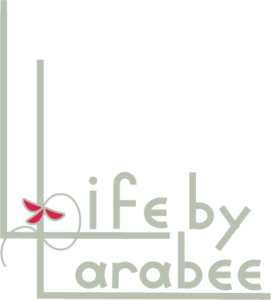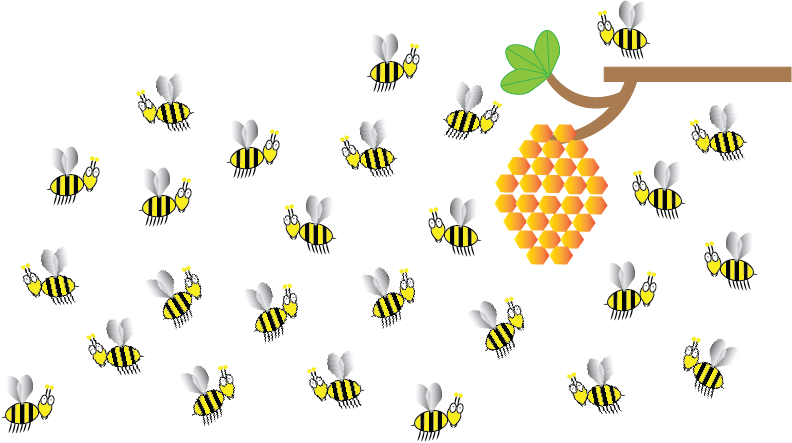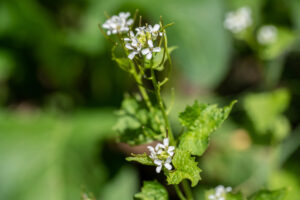Garlic Mustard (Alliaria petiolata) is a plant that has two seasons, one as a small plant with heart-shaped leaves, followed by a second year with tiny white flowers and then seeds. This plant is biennial, meaning it lives for two years. The leaf, when chewed in the spring, tastes like garlic.
I found out quickly from what I read just about everywhere, that the garlic mustard plant is very evasive and not a native plant; it takes over because of its ability to change soil conditions making it difficult for other native plants to grow. Eventually, the Garlic Mustard plant crowds out native plants. Most insects and wildlife do not eat the plant. It is so evasive, that the only way to kill it is to pull it up, bag or burn it. Composting allows the seeds to survive and grow new plants so that just perpetuates the cycle.
Sadly, the plant is edible and many recipes are out there that use the plant as a healthy salad herb. It also can be cooked and eaten as a side dish. It has a garlic flavor but should be cooked if you eat a lot of it. The plant in large amounts raw can be dangerous as the plant contains cyanide.
As history goes the plants were brought from Europe. The colonists used garlic mustard as an edible plant grown in gardens. It began to escape the gardens and run wild. It has not stopped and today is heavily concentrated in the midwestern forest and plains.
I tried it and it is garlicky, but one should look up the recipes and then pull up the plants you are not using and bag or burn them. They die off in June, but they will come back if not pulled out by the roots.




